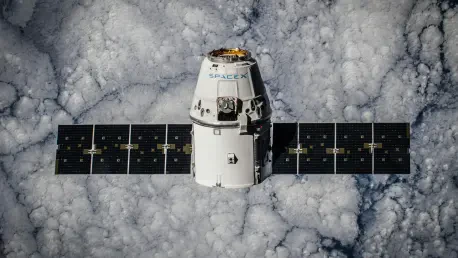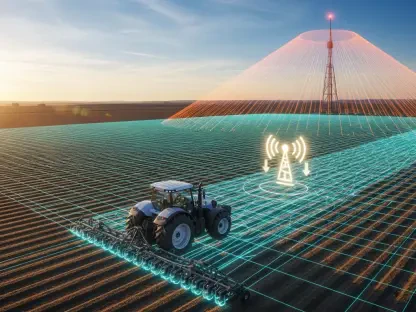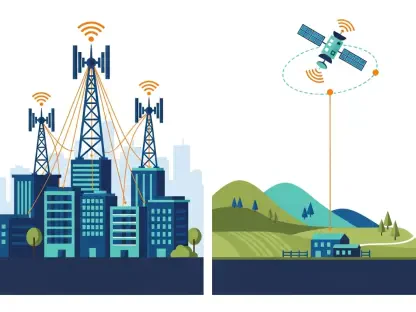T-Mobile’s groundbreaking launch of T-Satellite, powered by SpaceX’s Starlink, transforms the mobile connectivity landscape by eliminating traditional dead zones and enhancing communication capabilities in areas previously considered unreachable. This innovative service has been under development since 2022 and made its commercial debut on July 23 of the current year. Direct-to-cell satellite technology enables satellite signals to be transmitted directly to standard smartphones, requiring no special equipment. A remarkable aspect of this initiative is its ability to open communication channels across vast terrains, including remote wilderness, rural areas, and oceans, effectively offering seamless coverage over more than 500,000 square miles.
Eliminating Coverage Gaps with Direct Satellite Technology
Comprehensive Technological Advancements
Direct-to-cell satellite technology represents a significant shift in telecommunications, addressing longstanding coverage issues unresolvable by conventional cell towers. This technology was meticulously tested, starting its beta phase early in the current year. Initial trials demonstrated functional texting abilities in regions with sufficient sky exposure. The service initially supports SMS messaging and plans to unveil voice and data functionalities later. T-Mobile’s CEO, Mike Sievert, highlighted the project’s profound impact, especially emphasizing its life-saving potential during emergencies when traditional infrastructure might falter. The initiative is a crucial step in bridging the digital divide, notably in rural America where broadband access remains sparse.
Innovative and Accessible Solutions
Remarkably, T-Satellite extends beyond T-Mobile subscribers, offering a subscription model initially priced at $10 per month, later set to rise to $15. Users from various networks can opt into the service, showcasing an inclusive cross-carrier approach. Customers subscribed to premium packages such as Go5G Next receive the service bundled at no additional cost. This inclusivity has stirred considerable interest among tech enthusiasts, and application integration, including WhatsApp and AccuWeather for light data tasks, is anticipated by October. This accessibility and integration demonstrate T-Satellite’s potential to redefine connectivity constraints, augmenting communication efficiency across diverse platforms.
Strategic Deployment and Functionality
Enhancing Connectivity with Starlink
SpaceX’s Starlink underpins T-Satellite through low-Earth orbit satellite networks equipped with advanced antennas functioning akin to aerial cell towers. Over 650 satellites have been launched specifically to support this scheme, significantly expanding connectivity coverage in areas where terrestrial networks typically fall short. Reports confirm that phones seamlessly switch to satellite mode in the absence of cellular signals, ensuring uninterrupted communication. Despite bandwidth constraints, beta testers revealed the service handled messaging effectively. While initial speeds manage basic messaging, the progressive increase in bandwidth capacity is anticipated to bolster data services soon.
Navigating Implementation Challenges
Strategic positioning and investment in spectrum management enable T-Mobile to merge satellite functionality with its 5G network. This approach fosters a cohesive connectivity experience, potentially offering T-Mobile a competitive advantage over rivals. The accessible monthly fee of $15 could substantially bolster T-Mobile’s revenues, yielding significant financial benefits. Nonetheless, challenges exist, such as ensuring an unobstructed view for optimal connectivity and gradually ramping up data services. T-Mobile faces competition from entities like AT&T, with similar satellite aspirations, yet aims to distinguish itself through robust implementation and targeted strategies.
Regulatory Approvals and Future Prospects
Addressing Regulatory Frameworks
On the regulatory front, T-Mobile secured necessary approvals from the Federal Communications Commission, allowing satellite-to-phone spectrum utilization. This regulatory clearance paves the way for broader adoption and aligns with national ambitions focused on bridging existing digital gaps. Analysts highlighted the service’s potential impact on emergency communications, citing planned free access for first responders under specific conditions. This demonstrates proactive regulatory compliance and alignment with national objectives aimed at enhancing communication frameworks, particularly in underserved and rural areas.
Anticipating Future Developments
Looking ahead, potential expansions include international roaming capabilities and enhanced data speeds as Starlink’s network continues to grow. Experts forecast this technological leap could influence IoT innovations and autonomous vehicle sectors where consistent connectivity is crucial. Notably, iPhone users receive native support, facilitating satellite-based texting akin to traditional methods. Despite scalability concerns with potentially millions leveraging the service, SpaceX’s satellite deployment efforts are expected to ramp up to meet demand. Privacy issues remain a focus, yet communications are safeguarded with encryption, demonstrating T-Mobile’s commitment to secure and reliable service provision.
Advancing Telecommunications Landscape
T-Mobile’s launch of T-Satellite, harnessing SpaceX’s Starlink technology, is revolutionizing mobile connectivity by dissolving traditional dead zones and boosting communication in previously unreachable areas. This pioneering service, in development since 2022, was commercially introduced on July 23 this year. The direct-to-cell satellite technology allows standard smartphones to receive satellite signals directly, negating the need for specialized equipment. A significant aspect of this initiative is its ability to unlock communication channels across extensive landscapes, such as remote wilderness, rural areas, and expansive oceans, ensuring seamless coverage over 500,000 square miles. By utilizing Starlink’s vast network of low Earth orbit satellites, T-Mobile can provide uninterrupted service across a variety of terrains. This development heralds a new era in mobile connectivity, where location no longer hinders communication, enabling people to stay connected regardless of their geographical setting.









